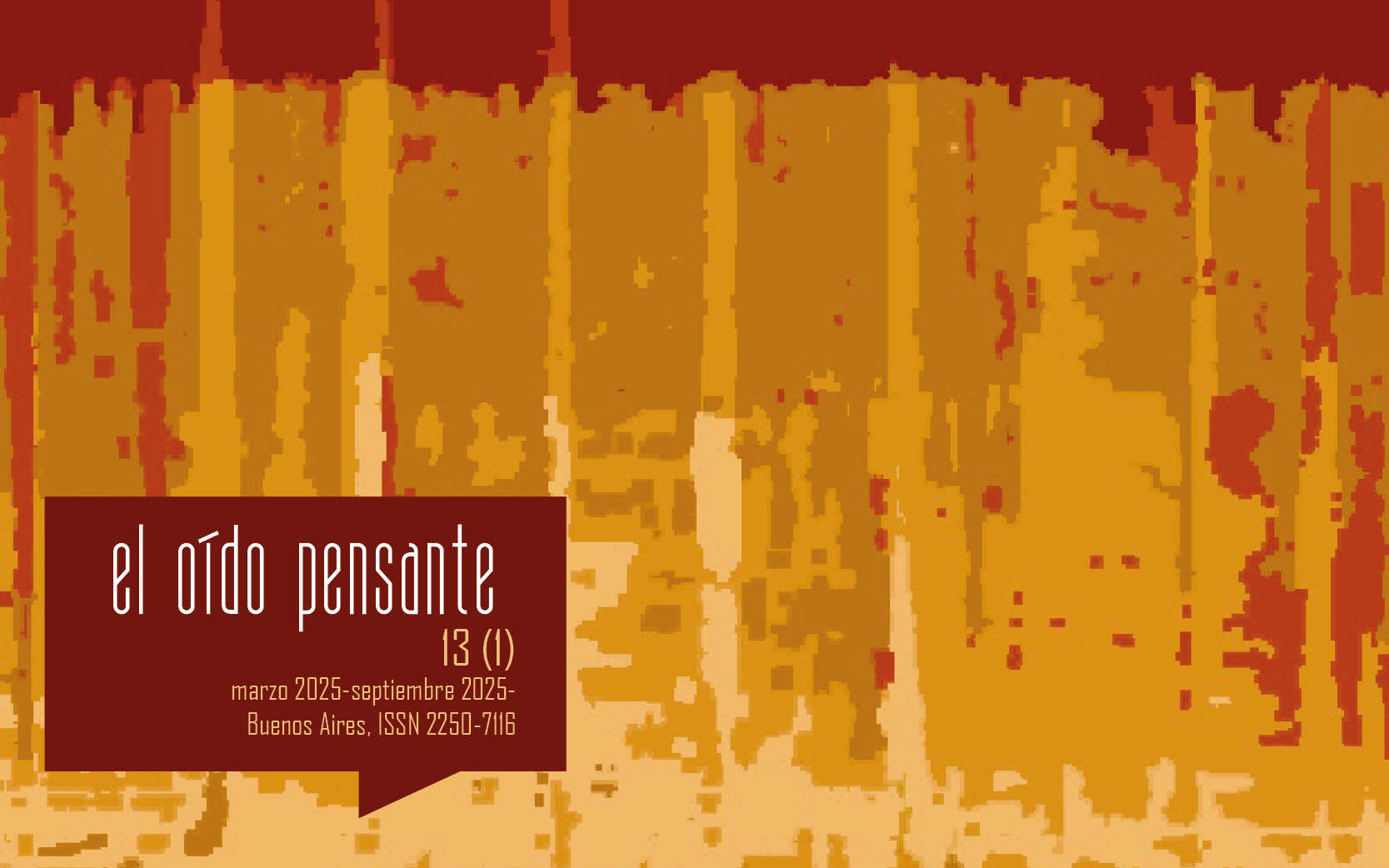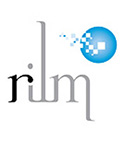Videos musicales ambientados en cafeterías. Sugestión y autocuidado emocional durante la pandemia por el Covid-19
Resumen
En este artículo se aborda un fenómeno cultural, el de los videos musicales ambientados en cafeterías, que experimentó un auge considerable durante la crisis sanitaria originada por el Covid-19. Se trata de un material difundido, principalmente, a través de la plataforma YouTube, cuyo propósito es propiciar estados de máxima relajación, concentración y creatividad, mediante el estímulo de la ASMR (respuesta sensorial meridiana autónoma). Tras llevar a cabo una etnografía digital, se han observado las dinámicas de funcionamiento de los canales seleccionados y se han analizado las diversas estrategias creativas que se ponen al servicio de los objetivos mencionados. Finalmente, el artículo aborda el análisis de este fenómeno a la luz de diversos marcos teóricos que ayudan a ubicarlo en un contexto social de modelos de consumo neocapitalistas, individualizados y espectacularizados.Descargas
Citas
Ardévol, E. y Gómez-Cruz, E. (2014). Digital Ethnography and Media Practices. The International Encyclopedia of Media Studies, VII, 498–518. DOI: https://doi.org/10.1002/9781444361506.wbiems193
Bai, G. H. (2020). Fighting COVID-19 with Mongolian fiddle stories. Multilingua, 39(5), 577–586. DOI: https://doi.org/10.1515/multi-2020-0087
Bañuelos, J. (2009). YouTube como plataforma de la sociedad del espectáculo. Razón y Palabra, 66.
Barratt, E. L. y Davis, N. J. (2015). Autonomous Sensory Meridian Response (ASMR): A flow-like mental state. PeerJ, 2015(3). DOI: https://doi.org/10.7717/peerj.851
Bartolome, A., Ha, N. B. y Niu, S. (2021). Investigating Multimodal Interactions and Parasocial Attractiveness in YouTube ASMR Videos. Proceedings of the ACM Conference on Computer Supported Cooperative Work, CSCW, 14–18. DOI: https://doi.org/10.1145/3462204.3481763
Baudrillard, J., Vicens, A. y Rovira, P. (1978). Cultura y simulacro. Barcelona: Kairós.
Bijsterveld, K. (2010). Acoustic Cocooning. Senses and Society 5 (2), 189-211. DOI: 10.2752/174589210X12668381452809
Block, I. (2021). Trend Watch: YouTube ambience rooms are the only thing keeping us sane right now. The Standard. Recuperado de: https://www.standard.co.uk/homesandproperty/interiors/youtube-ambience-rooms-sound-videos-b922132.html
Borkovich, D. J. (2022). Digital Ethnography: a Disruptive Qualitative Approach To Inquiry. Issues In Information Systems, 23(4), pp. 119-134. DOI: https://doi.org/10.48009/4_iis_2022_111
British Academy. (2021). The COVID decade: understanding the long-term societal impacts of COVID-19. London. Recuperado de: https://www.thebritishacademy.ac.uk/publications/covid-decade-understanding-the-long-term-societal-impacts-of-covid-19/
Brooke, E. (2021). The Soothing, Digital Rooms of YouTube. New York Times. Recuperado de: https://www.nytimes.com/2021/02/16/style/ambience-videos-asmr-youtube.html
Bull, M. (2000). Sounding out the city: Personal stereos and the management of everyday life. New York: Berg Publishers.
Chadios, K. (2005). The urban coffee shop (Tesis doctoral). Massachusetts Institute of Technology, Cambridge, Estados Unidos.
Chusna, A., Mutahir, A. y Taufiqurrohman, M. (2021). Revisiting Coffee Shops as Public Space in Purwokerto. Jurnal Antropologi: Isu-Isu Sosial Budaya, 23(2), 157–164.
Corbett, K. (2021). These Soothing Coffee Shop Videos Are the ASMR We Didn’t Know We Needed. House Beautiful. Recuperado de: https://www.housebeautiful.com/lifestyle/a35492285/soothing-asmr-coffee-shop-videos/
de Moya Martínez, M. D. V., Tornero, A. S. y Valero, S. M. (2024). Costumbres musicales en redes sociales durante y tras el Gran Confinamiento. El oído pensante, 12(1), 152-175.
DeNora, T. (2016). Music asylums. New York: Routledge
Droumeva, M. (2017). The Coffee-Office: Urban Soundscapes for Creative Productivity. BC Studies: The British Columbian Quarterly, 0(195), 119–127. DOI: https://doi.org/10.14288/bcs.v0i195.189054
Droumeva, M. (2021). Soundscapes of Productivity. The Coffee-Office and the Sonic Gentrification of Work. Resonance, 2(3), 377–394. DOI: https://doi.org/10.1525/res.2021.2.3.377
Fadipe, I. A. y Salawu, A. (2022). ‘Coronavirus, you are a Stranger,’ Examining Yoruba Indigenous Music in the Quest to Tackle COVID-19 Pandemic. Journal of African Films and Diaspora Studies, 5(1), 75–99. DOI: https://doi.org/10.31920/2516-2713/2022/5n1a4
Ferreira, J., Ferreira, C. y Bos, E. (2021). Spaces of consumption, connection, and community: Exploring the role of the coffee shop in urban lives. Geoforum, 119, 21–29.
Florida, R. (2002). The rise of the creative class (Vol. 9). New York: Basic books.
Gallagher, R. (2018). Générer l’euphorie en ligne: l’esthétique de la culture ASMR. Audimat, 9(1), 85–113.
Garro, D. (2017). Autonomous Meridian Sensory Response – From Internet Subculture to Audiovisual Therapy. En Proceedings of the Electronic Visualisation and the Art Conference (pp. 395–402). London: BCS, The Chartered Institute for IT. DOI: https://doi.org/10.14236/ewic/eva2017.79
Gavin, D. (2013). Starbucks Exceptionalism: An Institutional Ethnographic Exploration of Coffee Culture in America. Journal of Psychological Issues in Organizational Culture, 4(3), 44–58. DOI: https://doi.org/10.1002/jpoc.21118
Habermas, J. (2020). The public sphere: An encyclopedia article. En Critical theory and society (pp. 136-142). New York: Routledge.
Helmond, A. (2015). The Platformization of the Web: Making Web Data Platform Ready. Social Media and Society, 1(2). DOI: https://doi.org/10.1177/2056305115603080
Herschmann, M. y Trotta, F. (2021). Sonorous Windows in Times of Pandemic. Revista Lusófona de Estudos Culturais, 8(1), 141–153. DOI: https://doi.org/10.21814/rlec.3171
Horst, H. A. y Miller, D. (Eds.). (2012). Digital anthropology. New York: Routledge.
Hosseinzadeh, P., Zareipour, M., Esfandyar, B. y Moradali, M. R. (2022). Social Consequences of the COVID-19 Pandemic. A Systematic Review. Investigación y Educación En Enfermería, 40(1),e10.
Hussain, M. N., Tokdemir, S., Al-Khateeb, S., Bandeli, K. K. y Agarwal, N. (2018). Understanding digital ethnography: Socio-computational analysis of trending youtube videos. En The Eight International Conference on Social Media Technologies, Communication, and Informatics (pp. 1–6). Niza, Francia.
Iossifidis, M. J. M. (2017). ASMR and the “reassuring female voice” in the sound art practice of Claire Tolan. Feminist Media Studies, 17(1). DOI: https://doi.org/10.1080/14680777.2017.1261463
Kassabian, A. (2004). Would you like some world music with your Latte? Starbucks, Putumayo, and distributed tourism. Twentieth-Century Music, 1(2), 209–223. DOI: https://doi.org/10.1017/S1478572205000125
Klausen, H. B. (2019). ‘Safe and sound’ – what technologically-mediated ASMR is capable of through sound. SoundEffects, 8(1). Recuperado de: www.soundeffects.dk
Klausen, H. B. (2021). The ambiguity of technology in ASMR experiences. Nordicom Review, 42(2021), 124–136.
Kottke, J. (2021). Self-Medicating Media: Relax in Online Ambiance Rooms. Kottke dot Org. Recuperado de: https://kottke.org/21/02/self-medicating-media-relax-in-online-ambiance-rooms
Kovacevich, A. y Huron, D. (2019). Two Studies of Autonomous Sensory Meridian Response (ASMR): The Relationship between ASMR and Music-Induced Frisson. Empirical Musicology Review, 13(1–2), 39. DOI: https://doi.org/10.18061/emr.v13i1-2.6012
Liebers, N. y Schramm, H. (2019). Parasocial Interactions and Relationships with Media Characters-An Inventory of 60 Years of Research Product and Brand Placement Effects View project Motives and effects of watching mega-sporting events View project. Communication Research Trends, 38(2), 4-31.
Long, E., Patterson, S., Maxwell, K., Blake, C., Bosó Pérez, R., Lewis, R. y Mitchell, K. R. (2022). COVID-19 pandemic and its impact on social relationships and health. Journal of Epidemiology and Community Health, 76(2), 128–132. DOI: https://doi.org/10.1136/jech-2021-216690
McCain, K. (2017). Fans Love It a Latte: The Rise and Participatory Nature of Coffee Shop AUs. The Phoenix Papers, 3(1), 18–24.
Makalintal, B. (2021). How YouTube’s Ambience Artists Create Vibes, Virtually. Vice. Recuperado de: https://www.vice.com/en/article/ambient-youtube-videos-asmr-lofi-hip-hop-beats-how-to-make/
Mehta, R., Zhu, R. y Cheema, A. (2012). Is noise always bad? exploring the effects of ambient noise on creative cognition. Journal of Consumer Research, 39(4), 784–799. DOI: https://doi.org/10.1086/665048
Morrison, A. (2017). A Typology of Places in the Knowledge Economy: Towards the Fourth Place. SSRN Electronic Journal. DOI: https://doi.org/10.2139/ssrn.3056754
Nieborg, D. B. y Poell, T. (2018). The platformization of cultural production: Theorizing the contingent cultural commodity. New Media and Society, 20(11), 4275–4292. DOI: https://doi.org/10.1177/1461444818769694
Niu, S. y Bartolome, A. (2021). #Stayhome #withme: How do youtubers help with covid-19 loneliness? Conference on Human Factors in Computing Systems - Proceedings. DOI: https://doi.org/10.1145/3411764.3445397
Oldenburg, R. y Brissett, D. (1982). The Third Place. Qualitative sociology, 5, 265-284.
Patricio, J., Rufí, P., Angulo Jiménez, Á., Gallego Escobar, F., García Martínez, Á., Salas, S. G. y Rey, L. (2019). Youtube y la economía del algoritmo. (J. P. Pérez Rufí, Ed.). Málaga: eumed.net.
Porfírio, J.F. (2021). Sleep/relax/work/study/read. SoundEffects, 10(1), 27-41.
Porfírio, J.F. (2023). YouTube and the Sonification of Domestic Everyday Life. En H. Rogers, J. Freitas, & J. F. Porfírio (Eds.), Youtube and Music. Online Culture and Everyday Life (pp. 209–229). New York: Bloomsbury.
Schafer, R. M. (1969). The New Soundscape. Scarborough: Berandol Music Limited.
Schafer, R. M. (1977). Schafer. The soundscape: our sonic environment and the tuning of the world. 1st ed. Rochester: Destiny Books.
Seta, G. D. (2020). Three lies of digital ethnography. Journal of Digital Social Research, 2(1), 77–97.
Smith, N. y Snider, A. M. (2019). ASMR, affect and digitally-mediated intimacy. Emotion, Space and Society, 30(August 2017), 41–48. DOI: https://doi.org/10.1016/j.emospa.2018.11.002
Spencer, E. K. (2020). Touching Sounds: Re-examining audiotactile affect with reference to ASMR YouTube content and Musical Production Practices. En J. Dack, T. Spinks, & A. Stanović (Eds.), Sound Art and Music: Philosophy, Composition, Performance (pp. 70–92). Newcastle: Cambridge Scholars Publishing.
Stewart, J. (2012). Oh Blessed Holy Caffeine Tree: Coffee in Popular Music. M/C Journal, 15(2). DOI: https://doi.org/10.5204/mcj.462
Stougaard Pedersen, B. y Wiwe Vilmar, T. (2021). Editorial: Sound and Listening Spaces. SoundEffects, 10(1), 1–6.
Toural, C. y López García, X. (2019). La alargada sombra del entramado digital. Presentación dossier: Historia de los nuevos medios digitales. Revista Internacional de Historia de La Comunicación, 13, 7–10.























